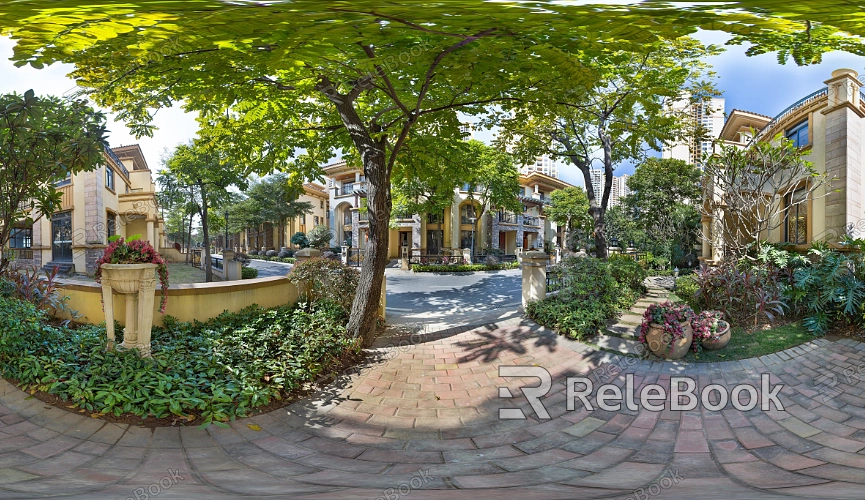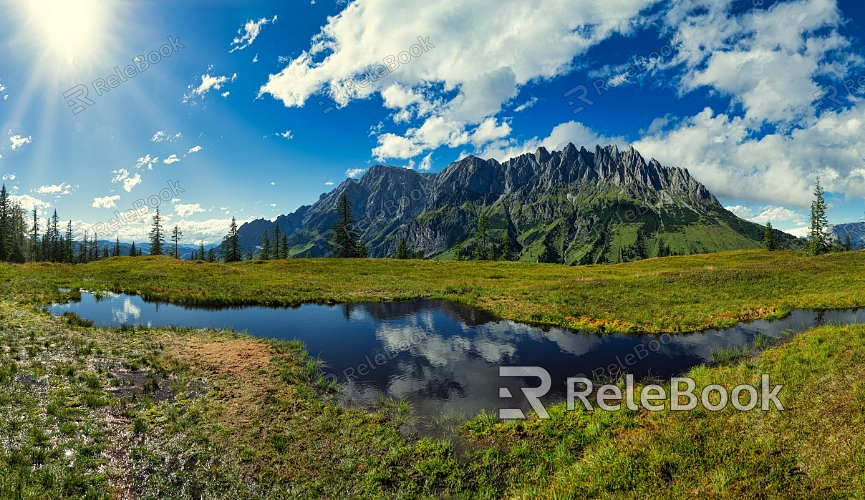Can I HDR Merge Two Images in Lightroom?
When working on complex scenes in 3D software like Blender, 3ds Max, or Cinema 4D, designers often rely on HDR images to enhance lighting and environmental effects. However, there are times when a single HDR image isn’t enough to achieve the desired visual richness, leading designers to consider merging multiple HDR images. So, can Lightroom be used to merge two HDR images? This article will explore that question and offer practical suggestions.

1. The Role of HDR Images in 3D Modeling
Understanding HDR Images and Their Applications
HDR (High Dynamic Range) images capture and display a broader range of brightness and color, making them essential in 3D modeling and rendering. For instance, using an HDR environment map in Blender can make the lighting and shadows in a scene appear more realistic. Similarly, in Cinema 4D, HDR images are widely used to enhance the realism of materials.
Why Merge HDR Images?
Sometimes, a single HDR image may not fully meet the needs of a complex scene. Designers might need to merge multiple HDR images to achieve more nuanced lighting effects. This approach is especially useful when dealing with scenes that feature multiple light sources or varying environmental effects. Merging HDR images can result in smoother transitions between light and shadow, as well as more refined color representation.
2. HDR Merging Capabilities in Lightroom
Overview of Lightroom’s HDR Functionality
Lightroom is a powerful image processing tool with a built-in HDR merge feature. This allows users to combine several photos with different exposures to create an HDR image, preserving more detail within a single shot. It’s a feature widely used by photographers to enhance the dynamic range of their images.
Does Lightroom Support Merging Multiple HDR Images?
While Lightroom does support HDR merging, it’s primarily designed for merging images with varying exposures, not for combining pre-existing HDR images. This is because HDR images already contain a wide range of brightness and color data, and merging them directly could lead to a loss of detail or unnatural transitions.

3. Alternatives for Merging HDR Images in Lightroom
Manual Image Blending
If you need to work with multiple HDR images in Lightroom, consider manually blending the images. You can use tools like layer masks or gradient filters to manually adjust the brightness and color balance, creating an effect similar to an HDR merge. This approach requires some experience and skill but offers more precise control over the final image.
Using Other Software for HDR Merging
If Lightroom falls short for merging HDR images, you might want to explore other specialized HDR processing software, such as Photomatix Pro or HDR Efex Pro. These tools are better equipped to handle multiple HDR images and offer more options for fine-tuning the merge.
Applying HDR Images in 3D Software without Merging
In 3D modeling and rendering, you don’t always need to merge HDR images. Instead, you can apply different HDR images to various parts of a scene. For example, you might use one HDR image for the overall environment and another for specific lighting effects, achieving the desired visual impact without needing to merge the images.
4. Effective Use of HDR Images in 3D Projects
Aligning Project Needs with HDR Applications
In any 3D modeling and rendering project, it’s crucial to understand the specific requirements of the project to determine how to use HDR images effectively. If the project demands highly realistic lighting, you may opt for high-quality HDR environment maps. For more detailed local effects, combining the strengths of multiple HDR images can be beneficial.
Balancing HDR Image Quality with Render Time
While HDR images can significantly enhance visual effects, they can also increase rendering complexity and time. Therefore, designers need to strike a balance between image quality and rendering efficiency. Adjusting the resolution or sampling settings of HDR images can help maintain high image quality while reducing render time.
By understanding and effectively utilizing Lightroom’s HDR capabilities, along with other specialized software, you can achieve higher image quality and more realistic visual effects in your 3D projects. For designers seeking high-quality HDR image resources, 3D textures, or 3D models for SketchUp or 3ds Max, Relebook offers a wide range of options to help you achieve exceptional results in your projects.

